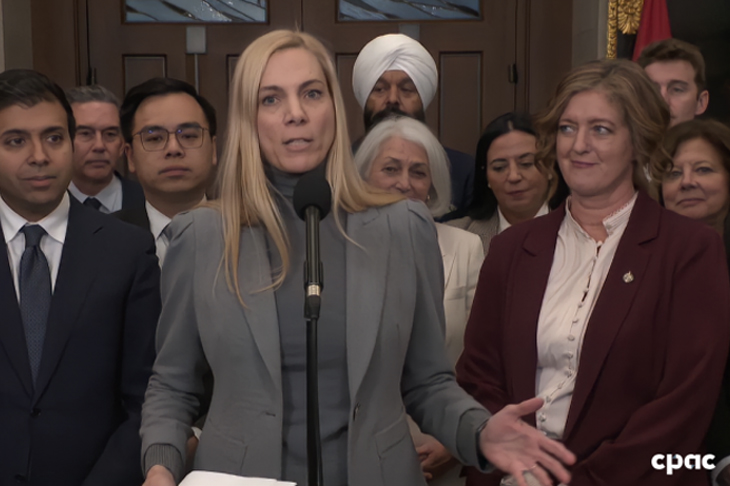By Greg O’Brien
GIVE THE DEPARTMENT OF Canadian Heritage and Minister Steven Guilbeault some credit for coming up with amendments to the Broadcasting Act which seem, at least upon first reading, like they can actually be turned into law in a minority Parliament.
This is something Guilbeault said would be coming some weeks ago, knowing there is only so much change for which the federal government can marshal support from its political rivals. He told an industry town hall in September: “One of the things we had to think long and hard about is do we go with this massive bill where we change just about everything under the sun, or do we try and slice it up into smaller pieces to try and ensure we can get as many of those pieces through Parliament, because the challenge in a minority Parliament, where you don’t control committees, where you don’t have control, necessarily, over the legislative agenda, let alone the Senate, our conclusion was ‘okay we can’t do everything at once’.”
As many in the TV and radio business have pushed for (and importantly, the NDP), the new amendments introduced into the House of Commons on Tuesday call for the so-called digital giants (or portions of their businesses) to be brought under the Act and into what should be a different system in order to help pay for the production of Canadian content.
However Bill C-10, An Act to amend the Broadcasting Act and to make related and consequential amendments to other Acts, stays away from what were some of the most contentious recommendations made by the Broadcast and Telecom Legislative Review panel report in January – such changes to the mandate and operations of the CBC, which the Liberals, NDP, Conservatives and Bloc Quebecois all have quite different opinions on what to do and surely would have been extremely difficult to get through a minority Parliament.
With the number of Canadians using traditional means to access audio-visual content (TV, radio, pay TV) on the wane and those subscribing to various streamers like Netflix, Prime Video, Disney+, Spotify, Crave, Club illico, Apple Music, tou.tv, YouTube Music, CBC Gem, Amazon Music and so on rising, the federal government wants to buttress the millions which will evaporate from the Canadian content system under the existing regulations as Canadians abandon the old ways for the new.
Under these amendments, all of those brands above would likely fall under the new “online undertakings” distinction under the Broadcasting Act, should these amendments be passed.
Netflix is now in over 60% of Canadian homes and the company is estimated to be earning $1 billion in annual revenue here and in a technical briefing today with journalists and in another with the film and broadcast industry, Department of Canadian Heritage officials said if streamers were made to pay into the system the way traditional broadcast undertakings are, it would mean an additional $830 million annually for Canadian content by 2023.
However, neither the department officials nor Minister Guilbeault would say whether they hope that is a floor, ceiling or somewhere in between. Plus, any increase from streamers is bound to be offset by decreases from the traditional sector, not only from subscription and viewer/listener losses, but due to how the these amendments are meant to bring the traditional sector in alignment with streamers when it comes to regulatory obligations.
“We are going as fast as we can.” – Minister Steven Guilbeault
The government wants there to be regulatory balance, or symmetry, between broadcasters and streamers. “What we’re doing is putting a regulatory framework on how (content) investments should be made in light of things we’re already asking from, from Canadian broadcasters,” Minister Guilbeault told a press conference on Tuesday afternoon.
So, while there will be more obligations for Netflix, there will be fewer for Corus, for example. There will continue to be no regulatory obligations for user-generated content or social media posts or video games. So Canadians can continue to post videos to TikTok and YouTube without worrying about CAVCO quotas or CPE contributions, while only curated, professional services charging for subscriptions earning some yet-to-be-defined level of revenue will have to contribute to the creation of Cancon. So user-generated YouTube content? No regs. YouTube Music? There will be some obligations.
So, why wouldn’t any streamers just ignore whatever new law hits the books? Fines. For the first time, the CRTC will be granted the ability to levy administrative monetary penalties, some up to $15 million per instance of falling out of line. We can argue later about whether or not the threat of a $15 million fine will deter a mammoth company like Google.
And, if the CRTC is going to set new contributions based on Canadian subscribers or revenue earned in Canada, can’t those foreign services just say “no, we won’t give you that data,” like they did when the CRTC demanded such numbers back in 2014 and both Google and Netflix said, “nope”?
The new amendments take steps there, too, giving the CRTC broader powers to demand confidential information – as well as additional protections for companies which have to fork over their data.
A lot of the specifics of all of this remains up in the air as the Commission itself is going to be tasked with writing new regulations for “online undertakings”, which – if the Regulator follows the amendments, will see whole system move away from a licencing regime to one where the CRTC sets “conditions of service” instead – whose financial obligations will be similar for streamers and broadcasters and include things like discoverability of Canadian content.
However, once the Bill is passed (in whatever form it takes after it spends some months winding its way through committee and compromise), Guilbeault said the government will use an Order-in-Council to tell the Commission exactly what it wants it to do via a policy directive.
The feds will then demand from the CRTC a public proceeding and decisions, within nine months of the directive, said the Minister. Time is of the essence. “We are going as fast as we can,” he said.
The amendments also make a much better effort at making the Act far more inclusive, where the “Canadian broadcasting system should serve the needs and interests of all Canadians — including Canadians from racialized communities and Canadians of diverse ethnocultural backgrounds — and should provide opportunities for Indigenous persons, programming that reflects Indigenous cultures and that is in Indigenous languages, and programming that is accessible without barriers to persons with disabilities,” reads the bill.
We’ll have more on this, including reaction from the industry, later in the week.
Original illustration by Paul Lachine, Chatham, Ont.









